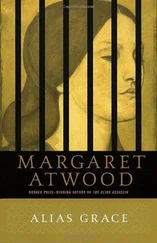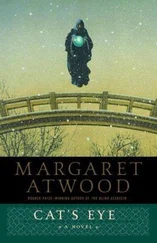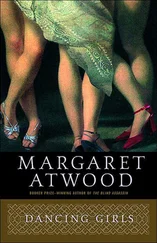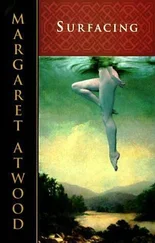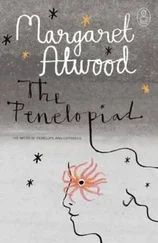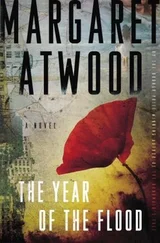“Why don’t we use a real set?” Jimmy asked one day when they were doing some chess. “The old kind. With plastic men.” It did seem weird to have the two of them in the same room, back to back, playing on computers.
“Why?” said Crake. “Anyway, this is a real set.”
“No it’s not.”
“Okay, granted, but neither is plastic men.”
“What?”
“The real set is in your head.”
“Bogus!” Jimmy yelled. It was a good word, he’d got it off an old DVD; they’d taken to using it to tear each other down for being pompous. “Way too bogus!”
Crake laughed.
Crake would get fixated on a game, and would want to play it and play it and perfect his attack until he was sure he could win, nine times out of ten anyway. For a whole month they’d had to play Barbarian Stomp (See If You Can Change History!). One side had the cities and the riches and the other side had the hordes, and—usually but not always—the most viciousness. Either the barbarians stomped the cities or else they got stomped, but you had to start out with the historical disposition of energies and go on from there. Rome versus the Visigoths, Ancient Egypt versus the Hyksos, Aztecs versus the Spaniards. That was a cute one, because it was the Aztecs who represented civilization, while the Spaniards were the barbarian hordes. You could customize the game as long as you used real societies and tribes, and for a while Crake and Jimmy vied with each other to see who could come up with the most obscure pairing.
“Petchenegs versus Byzantium,” said Jimmy, one memorable day.
“Who the fuck are the Petchenegs? You made that up,” said Crake.
But Jimmy had found it in the Encyclopedia Britannica , 1957 edition, which was stored on CD-ROM—for some forgotten reason—in the school library. He had chapter and verse. “‘Matthew of Edessa referred to them as wicked blood-drinking beasts,’” he was able to say with authority. “‘They were totally ruthless and had no redeeming features.’” So they tossed for sides, and Jimmy got Petchenegs, and won. The Byzantines were slaughtered, because that was what Petchenegs did, Jimmy explained. They always slaughtered everyone immediately. Or they slaughtered the men, at least. Then they slaughtered the women after a while.
Crake took the loss of all of his players badly, and sulked a little. After that he’d switched his loyalty to Blood and Roses. It was more cosmic, said Crake: the field of battle was larger, both in time and space.
Blood and Roses was a trading game, along the lines of Monopoly. The Blood side played with human atrocities for the counters, atrocities on a large scale: individual rapes and murders didn’t count, there had to have been a large number of people wiped out. Massacres, genocides, that sort of thing. The Roses side played with human achievements. Artworks, scientific breakthroughs, stellar works of architecture, helpful inventions. Monuments to the soul’s magnificence , they were called in the game. There were sidebar buttons, so that if you didn’t know what Crime and Punishment was, or the Theory of Relativity, or the Trail of Tears, or Madame Bovary , or the Hundred Years’ War, or The Flight into Egypt , you could double-click and get an illustrated rundown, in two choices: R for children, PON for Profanity, Obscenity, and Nudity. That was the thing about history, said Crake: it had lots of all three.
You rolled the virtual dice and either a Rose or a Blood item would pop up. If it was a Blood item, the Rose player had a chance to stop the atrocity from happening, but he had to put up a Rose item in exchange. The atrocity would then vanish from history, or at least the history recorded on the screen. The Blood player could acquire a Rose item, but only by handing over an atrocity, thus leaving himself with less ammunition and the Rose player with more. If he was a skilful player he could attack the Rose side by means of the atrocities in his possession, loot the human achievement, and transfer it to his side of the board. The player who managed to retain the most human achievements by Time’s Up was the winner. With points off, naturally, for achievements destroyed through his own error and folly and cretinous play.
The exchange rates—one Mona Lisa equalled Bergen-Belsen, one Armenian genocide equalled the Ninth Symphony plus three Great Pyramids—were suggested, but there was room for haggling. To do this you needed to know the numbers—the total number of corpses for the atrocities, the latest open-market price for the artworks; or, if the artworks had been stolen, the amount paid out by the insurance policy. It was a wicked game.
“Homer,” says Snowman, making his way through the dripping-wet vegetation. “ The Divine Comedy . Greek statuary. Aqueducts. Paradise Lost . Mozart’s music. Shakespeare, complete works. The Brontës. Tolstoy. The Pearl Mosque. Chartres Cathedral. Bach. Rembrandt. Verdi. Joyce. Penicillin. Keats. Turner. Heart transplants. Polio vaccine. Berlioz. Baudelaire. Bartok. Yeats. Woolf.”
There must have been more. There were more.
The sack of Troy , says a voice in his ear. The destruct ion of Carthage. The Vikings. The Crusades. Ghenghis Khan. Attila the Hun. The massacre of the Cathars. The witch burnings. The destruction of the Aztec. Ditto the Maya. Ditto the Inca. The Inquisition. Vlad the Impaler. The massacre of the Huguenots. Cromwell in Ireland. The French Revolution. The Napoleonic Wars. The Irish Famine. Slavery in the American South. King Leopold in the Congo. The Russian Revolution. Stalin. Hitler. Hiroshima. Mao. Pol Pot. Idi Amin. Sri Lanka. East Timor. Saddam Hussein.
“Stop it,” says Snowman.
Sorry, honey. Only trying to help.
That was the trouble with Blood and Roses: it was easier to remember the Blood stuff. The other trouble was that the Blood player usually won, but winning meant you inherited a wasteland. This was the point of the game, said Crake, when Jimmy complained. Jimmy said if that was the point, it was pretty pointless. He didn’t want to tell Crake that he was having some severe nightmares: the one where the Parthenon was decorated with cut-off heads was, for some reason, the worst.
By unspoken consent they’d given up on Blood and Roses, which was fine with Crake because he was into something new—Extinctathon, an interactive biofreak masterlore game he’d found on the Web. EXTINCTATHON, Monitored by MaddAddam. Adam named the living animals, MaddAddam names the dead ones. Do you want to play? That was what came up when you logged on. You then had to click Yes, enter your codename, and pick one of the two chat rooms—Kingdom Animal, Kingdom Vegetable. Then some challenger would come on-line, using his own codename—Komodo, Rhino, Manatee, Hippocampus Ramulosus—and propose a contest. Begins with, number of legs, what is it? The it would be some bioform that had kakked out within the past fifty years—no T-Rex, no roc, no dodo, and points off for getting the time frame wrong. Then you’d narrow it down, Phylum Class Order Family Genus Species, then the habitat and when last seen, and what had snuffed it. (Pollution, habitat destruction, credulous morons who thought that eating its horn would give them a boner.) The longer the challenger held out, the more points he got, but you could win big bonuses for speed. It helped to have the MaddAddam printout of every extinct species, but that gave you only the Latin names, and anyway it was a couple of hundred pages of fine print and filled with obscure bugs, weeds, and frogs nobody had ever heard of. Nobody except, it seemed, the Extinctathon Grandmasters, who had brains like search engines.
Читать дальше

